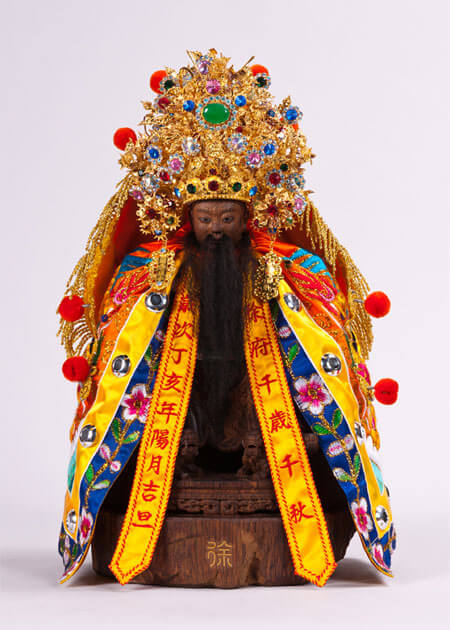About Us
About Us
History
The current site of the TianWen Temple was a natural port way back in the Zhou Dynasty (approx. 700 BC), commonly known as the ZhuZai Port, accessible via Chinese barques (three-masted sailing ships). Against a backdrop of turbulent waves and an expansive coastline, the ZhuZai Port is huge and offers a picturesque scenery. Many centuries of Tectonic plates movement gradually gave rise to the newly reclaimed land within the region of today’s Hunei, known as Hunei Village in Kaohsiung Prefecture during the Qing Dynasty.
Dating back to 1947, a gentleman called Guo WuZhen came with Xufu Qiansui (a divine lord title for the deity) to settle in YongAn where Guo made a living on aquafarming. Guo received a divine oracle to build a simple temple to house Xufu Qiansui which attracted many believers from far and wide. As devout followers reported stories of their prayers being granted, the word got spread further afield and brought more visitors to the temple. The committed followers started the suggestion of building a more established temple which then took a few years to complete. Later on due to its low terrain, easy flooding in the rainy seasons and weather erosion, the temple was rebuilt and completed in 1983. To this day, the temple has established itself as a divinely powerful presence with a steady influx of visitors.

Main Patron Saint
Nation-Guarding General, Xufu Qiansui of TianWen Temple
Housed as the temple’s primary deity is Xufu Qiansui, a title given to the nation-guarding general, Xu Shiji who was also named Maogong (594-669AD). Xu was a general in the Sui Dynasty over 1400 years ago known for his heroic efforts in the 18 Wagang Uprising. Xu soon declared allegiance to Li Yuan, Emperor Gaozu of the Tang Dynasty. Xu assisted Li Yuan in unifying the country and went with him on frontier border expansion maneuvers establishing the national territory of the Tang Dynasty. Xu had immense contributions to the Tang Dynasty and later assisted the Emperor of Gaozong in the governance of the country affirming Tang’s foundation for thriving prosperity. In unofficial historical documents, Xu was recorded as Tang Dynasty’s founding minister for securing Tang’s vast flourishing territory. In the Great Tang Chronicles, Xu was known as Xu Maogong.
During the second year of the reign of Emperor Gaozong of the Tang Dynasty (669AD), December 3, Li Ji died at the age of 76. As a gesture of mourning, the Emperor Gaozong suspended the imperial court meetings for 7 days, while giving Li the title of Grand Commandant of Yangzhou, the posthumous name of Zhenwu and a “Secret Weapon of East Garden” to go into Li’s burial. Time passed. In 1980, the so-called “Secret Weapon of East garden” was unearthed from Li’s tomb located right next to Zhao Mausoleum of Emperor Taizong of Tang Dynasty in Xian: Zhenwu Sword. This sword is now in the collection of the Xian Museum in Shanxi. It is the only existing sword made by following the imperial court specifications from the Tang Dynasty, hence containing immense value. Also unearthed from the same tomb is the “Sanliang Jinde Hat”, a gift from Emperor Taizong, currently the oldest of its kind ever discovered in ancient China. Before he passed away, Li Ji served three emperors in their imperial courts including that of Emperor Taizong and was thus given the special honor in his burial ceremony.

Xufu Qiansui